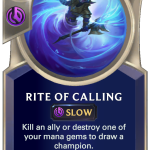
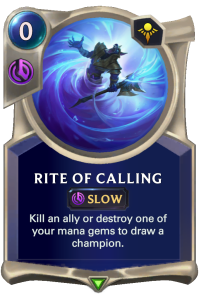
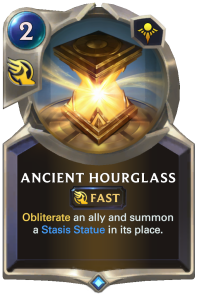
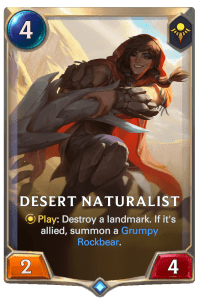
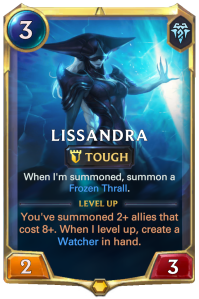
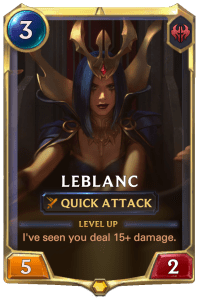

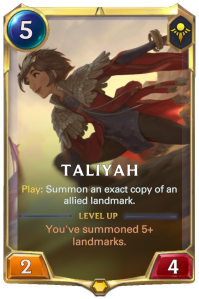
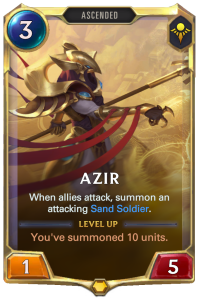
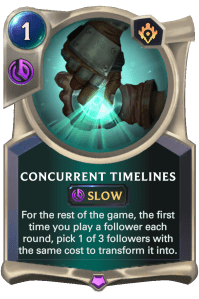
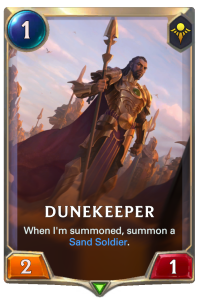
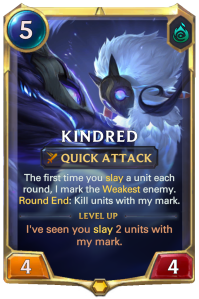
Legends of Runeterra’s Empires of the Ascended expansion was officially released yesterday.
As the first major expansion of the year, Empires of the Ascended added 110 cards to the game, as well as the next region, Shurima. Since the seventh ranked season has started and the third Seasonal Tournament is happening two months from now, players are aiming to figure out the next strongest strategy that will take over the meta.
Here are the 10 best cards from this expansion that can make an impact on the upcoming ranked meta.
10) Rite of Calling
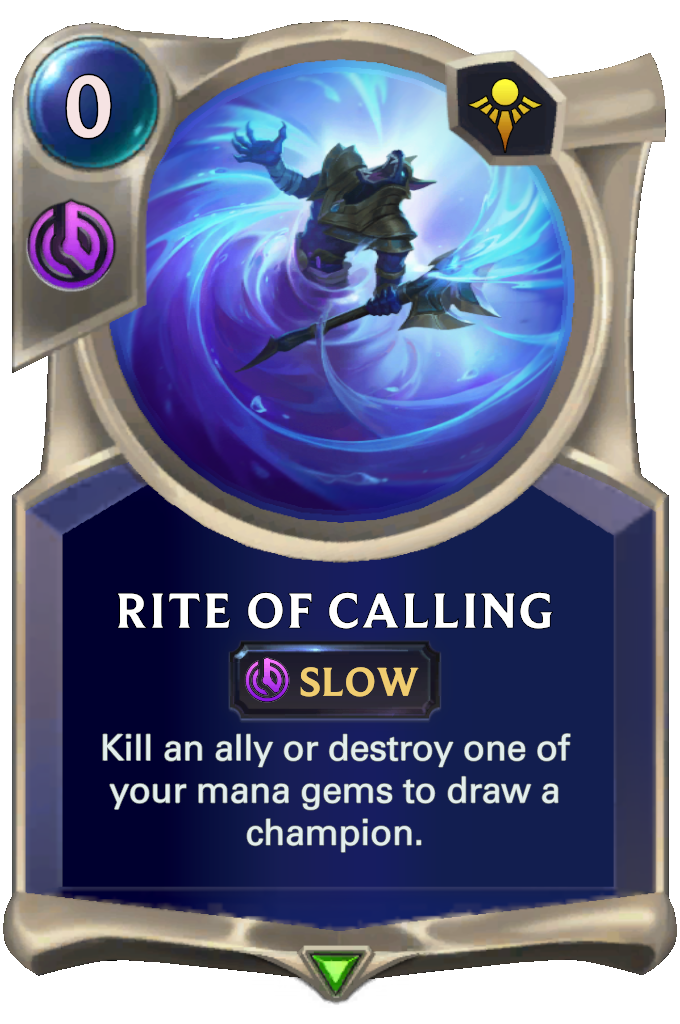
In LoR, decks that rely on specific champions to succeed can feel like either the most powerful creations in existence or the weakest if you fail to obtain them due to the luck of the draw. Rite of Calling circumvents this weakness, though, by allowing you to fish for your champion cards due to the tutoring ability.
While the price for each of the Shuriman Rites is pricey for non-Token decks in the earlier stages of the game, in the late game, you can destroy your mana to maintain your board and draw your key cards.
9) Ancient Hourglass
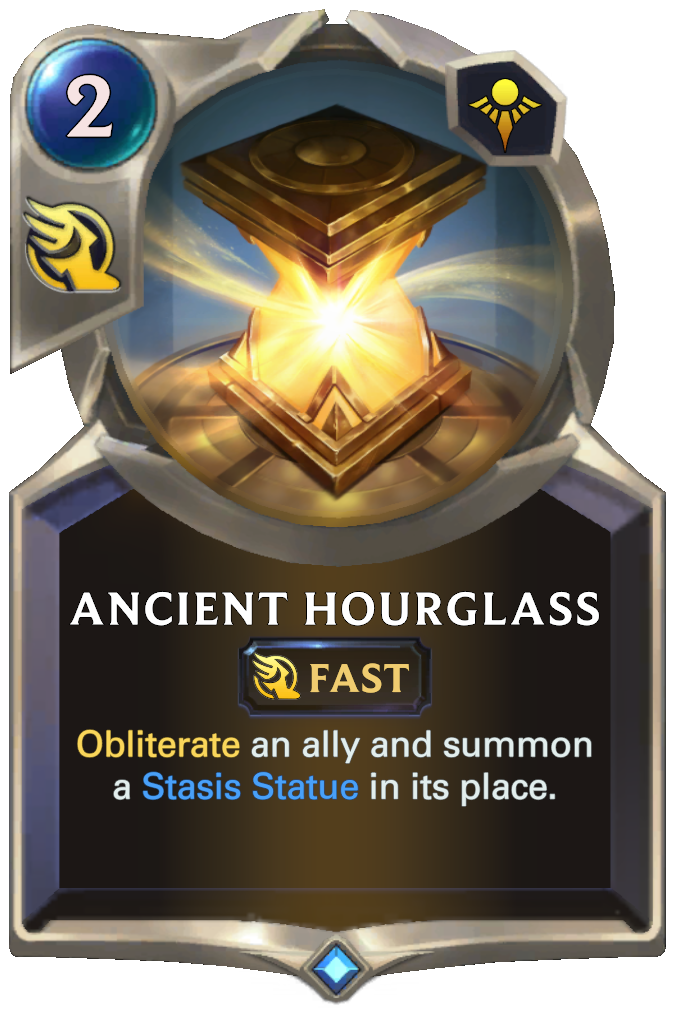
One major aspect when judging a region, aside from the power level of its threats, is how well it can respond to removal or combat tricks from opposing cards. At only two mana, Ancient Hourglass has the power to thwart many high committal advances from the opponent.
The ability to take your units placed in dangerous scenarios and turn them into a temporary Landmark is such a difficult circumstance to be punished outside of the spell stack since Landmark removal is tougher to come across than unit removal.
8) Desert Naturalist
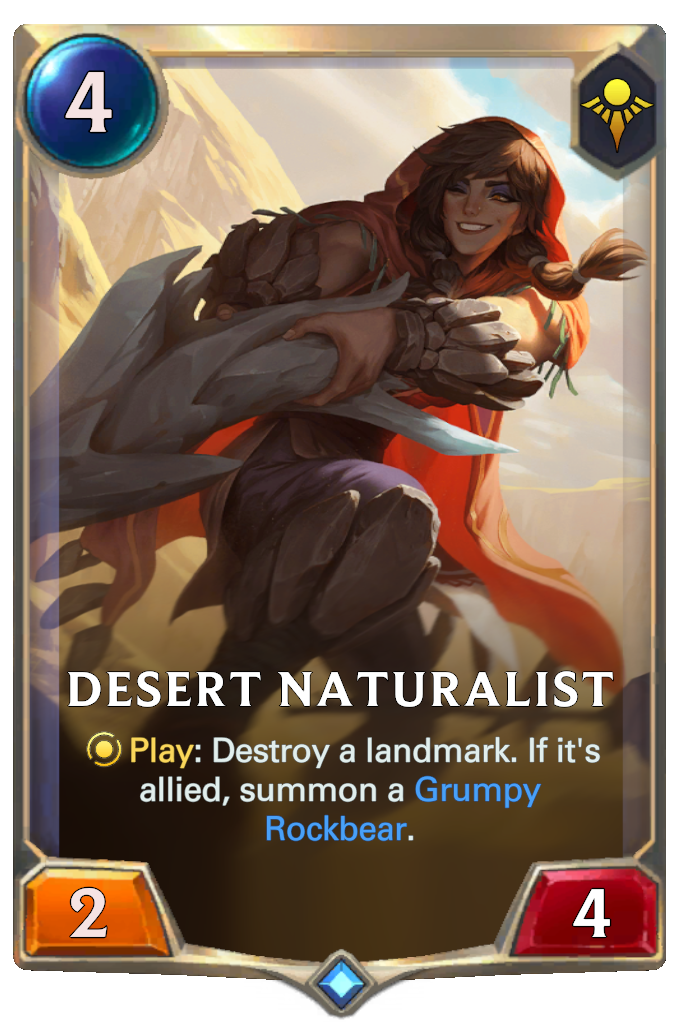
Landmarks have had an increasing presence in the game since their inclusion in Monuments of Power. While more powerful Landmarks have been introduced since then, like The Grand Plaza and The Veiled Temple, Shurima is bringing a plethora of them in Empires of the Ascended.
Desert Naturalist provides a dual purpose that either removes threatening Landmarks from your opponent or lets you trade in your weaker Landmarks for a 5/4 Grumpy Rockbear. This gives her a niche avenue where she can be used in a Mono-Shuriman aggro deck that plays a Buried Sun Disc (even without the ultimate goal of ascending Azir, Renekton, or Nasus) with the sole purpose of being turned into a Rock Bear for a total of 7/8 worth of stats on turn four.
7) Lissandra
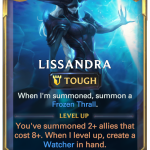

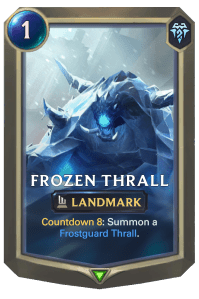
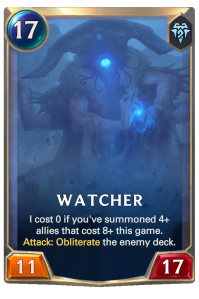
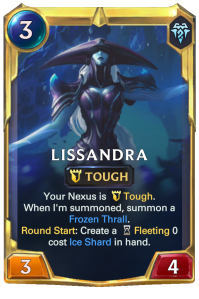
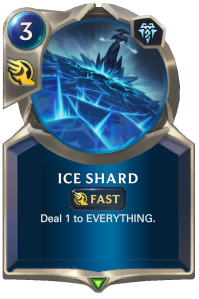
The Ice Witch finds herself on this list due to her play patterns that give her the ability to push control decks out of the meta. Lissandra-style decks really shine at consuming slower decks thanks to her constant wave of 8/8 Frostguard Thralls she can conjure with a Watcher at the end of her curve to Obliterate any deck that’s slow to punish her.
Despite Lissandra’s power level and ability to summon multiple Frostguard Thralls, she does rely on her Draklorn Inquisitor allies to bring them into play at a reliable rate. Eight rounds to wait for a countdown ability is too long in any competitive game and the Inquisitor summoning them four turns sooner will give you the edge needed to threaten midrange and control decks.
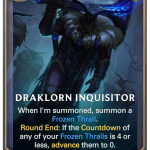
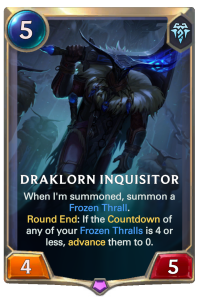
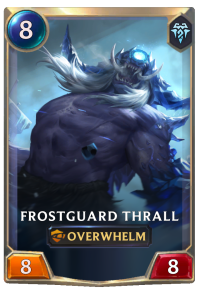
While Lissandra excels at beating anything slower than a conventional aggro deck, she still has a fair chance at taking down faster lists. Due to her Tough keyword and three health, she’s durable enough to survive on the board and contest aggressive threats for longer periods.
While summoning two eight drops already signals the end for an aggro deck, if the game isn’t decided yet at that point, Lissandra provides your Nexus with the Tough ability, which should be the final nail in the coffin for any fast deck.
6) LeBlanc/Sivir
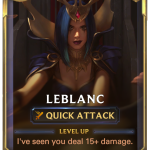

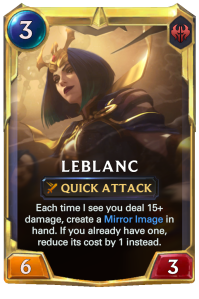

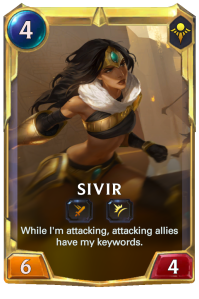
Both of these champions accentuate the Reputation mechanic and lend themselves more toward aggression due to their Quick Attack keywords and high power. While both can fit together fairly well, there are other avenues that these champions can go down to find success.
In regard to LeBlanc, Noxus and Freljord are a region pairing that have found consistent success throughout every era of LoR thanks to the synergy of potent five-power units from Freljord and Noxus’ ability to synergize with them. LeBlanc is frail and Freljord combat spells, like Elixir of Iron and Troll Chant, help her survive and reach her leveled state.
Picking either Ashe or Sejuani with LeBlanc gives you more five-powered champions that either control the board or provide surprising lethal opportunities with Frostbite usage.
With Sivir, going into Piltover and Zaun and partnering up with Vi for high damage output helps Sivir level up and allows you to give Sivir a potential Sumpworks Map (which spreads Elusive to other allies when she’s attacking). In addition, the Lucky Finds gives you multiple card plays for Vi that grant her more strength.
5) Taliyah
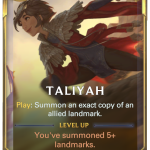

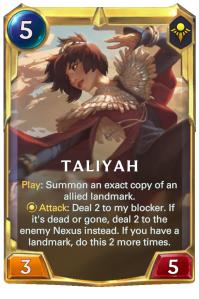
The Stoneweaver’s focus on Landmarks provides an interesting dynamic for the card type as a whole and allows her to carve out a space in the meta. One decklist that Taliyah can thrive in, at first glance, is Lissandra decks since you can copy more Frozen Thralls to help overrun slower opponents. In addition, if you decide to try out a Buried Sun Disc deck, Taliyah can provide extra safety for your key Landmark.
While Landmarks in Empires of the Ascended are low in tempo with high-value returns after enough time, Taliyah can pair up with other regions to duplicate higher strength cards like The Veiled Temple. In addition to this application, Taliyah can pair up with the previously mentioned Ancient Hourglass to gain many copies of a powerful unit.
4) Azir
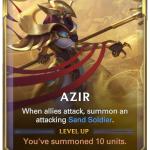

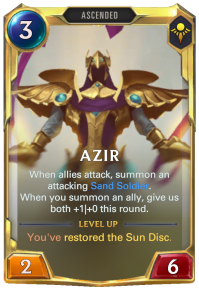
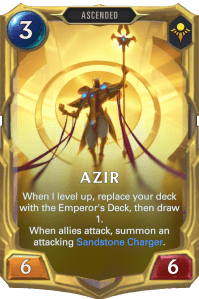
When players think of the Emperor of the Sands, his expansive and powerful level-three deck immediately comes to mind. Despite this, reaching level three with an Ascended champion is usually unlikely and trying to find the best level one or two strategies with each of them is how they’ll see ladder play. For Azir, mass token summoning and multiple attacks are some of his better strategies.
In Demacia, when pairing up with Lucian, Azir can provide multiple units to die, which helps Lucian reach his formidable second level. Once Lucian levels up, the more Rally effects he brings about, the more soldiers that can be summoned from Azir or Emperor’s Dais.
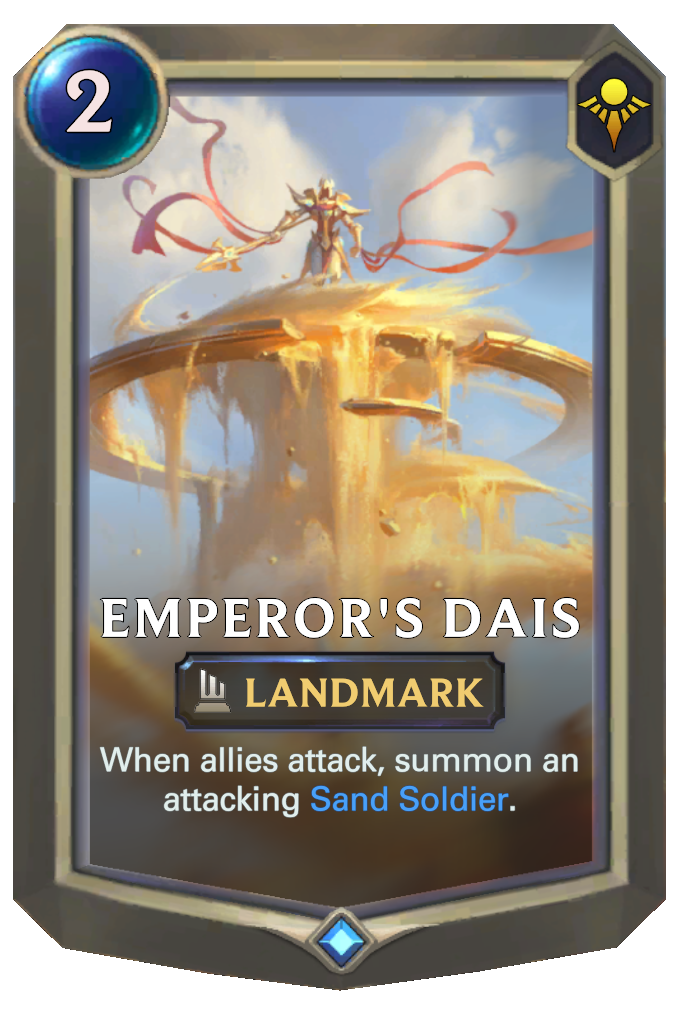
If Demacia isn’t your flavor of aggression, then tapping into Shadow Isles for Hecarim will also allow you to find more power bonuses due to the constant stream of Ephemeral units.
3) Concurrent Timelines
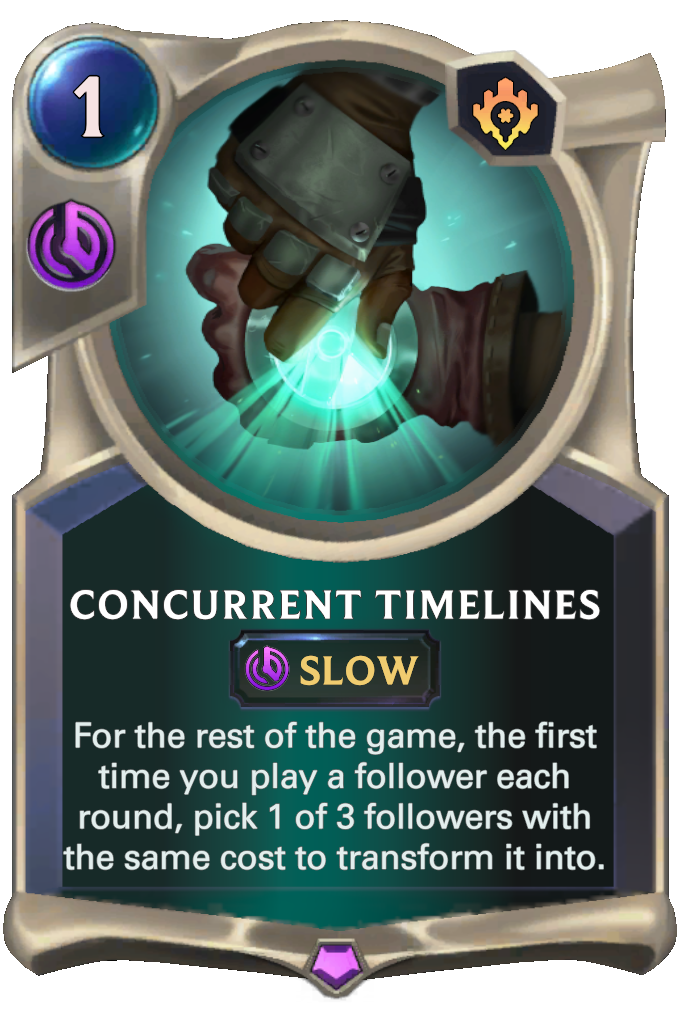
Ekko, the champion featured in the artwork and flavor text of the card, isn’t appearing in Empires of the Ascended. But this spell related to him will definitely shape the meta. Concurrent Timelines asks players a simple question: “How many units with bad stat lines but strong effects can you fit into your deck?” While there are multiple units with powerful effects and meager stats that can be found in Piltover and Zaun, there are even more ridiculous combos in the Shadow Isles.
Cards like Evershade Stalker, Blighted Caretaker, and Chronicler of Ruin or the new Spirit Leech and Fading Icon have potent effects attached to weak bodies, something that Concurrent Timelines thrives in. The ability to fix up these weaker stat lines at earlier mana costs only leads to the grand finale of interactions that can end games.
The ultimate combo is when you play Commander Ledros, with his skill ability that deals damage equal to half the opponent’s Nexus health. Once he’s played, Concurrent Timelines has a 60-percent chance to transform him into The Dreadway due to the smaller pool of nine-mana units in the game, which doubles the damage of his skill that will then deal 100-percent of the opponent’s health.
If the opponent fails to kill or silence the freshly summoned Dreadway or use Deny/Rites of Negation on Ledros’ skill, both of which are difficult tasks to perform for many regions at Fast or Burst speed, then you win the game instantly.
Whatever era players find themselves in with the upcoming meta, Concurrent Timelines is sure to take some time to fit in.
2) Dunekeeper
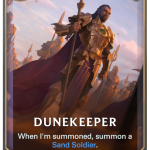

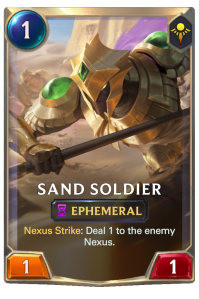
As one of the four one-mana Shuriman units, Dunekeeper sits on the throne for the most powerful and versatile of them all. While Bloodthirsty Marauder boats more natural stats, Dunekeeper represents more potential burst damage when played on the first turn.
The fact that you can deal four damage with one card on the first turn if your opponent has zero answers means decks will need to focus on having plays at one mana to halt some of the damage that Dunekeeper can provide. In addition to these aggressive uses, the Sand Soldier can also be used as sacrifice fodder for cards like Rite of Calling or Glimpse Beyond.
Dunekeeper will easily find slots in either aggro decks, token decks, or Mono-Shuriman Ascended lists looking to catch up on the board after playing Buried Sun Disc on turn one.
1) Kindred
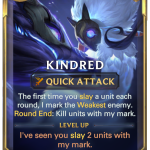

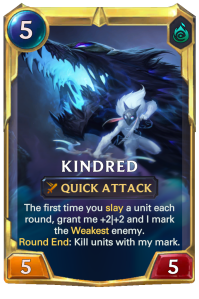
The Eternal Hunters with their Mark mechanic are a removal engine that can be difficult for your opponents to overcome once you get the Slay engine rolling. While marking the weakest enemy sounds inconsequential for your opponent at first, if you can constantly remove tiny units before marking them, eventually the only “weak” units your opponent will have are stronger ones that will be unable to avoid getting marked.
The best decks for Kindred will either lean toward the previously mentioned Concurrent Timelines list as a value-generating champion or a potential pairing with Nasus due to both of them relying on the Slaying mechanic to scale.
Understanding the unique Mark mechanic and making sure you order battles and removal correctly will be imperative to finding success with Kindred. While leveling Kindred up is neither difficult or easy, reaching the second level with them allows you to put your opponent on an alternate clock by having their combat scale up to ridiculous heights.
You can collect these cards and try them for yourself now since LoR: Empires of the Ascended is officially available on PC and mobile.


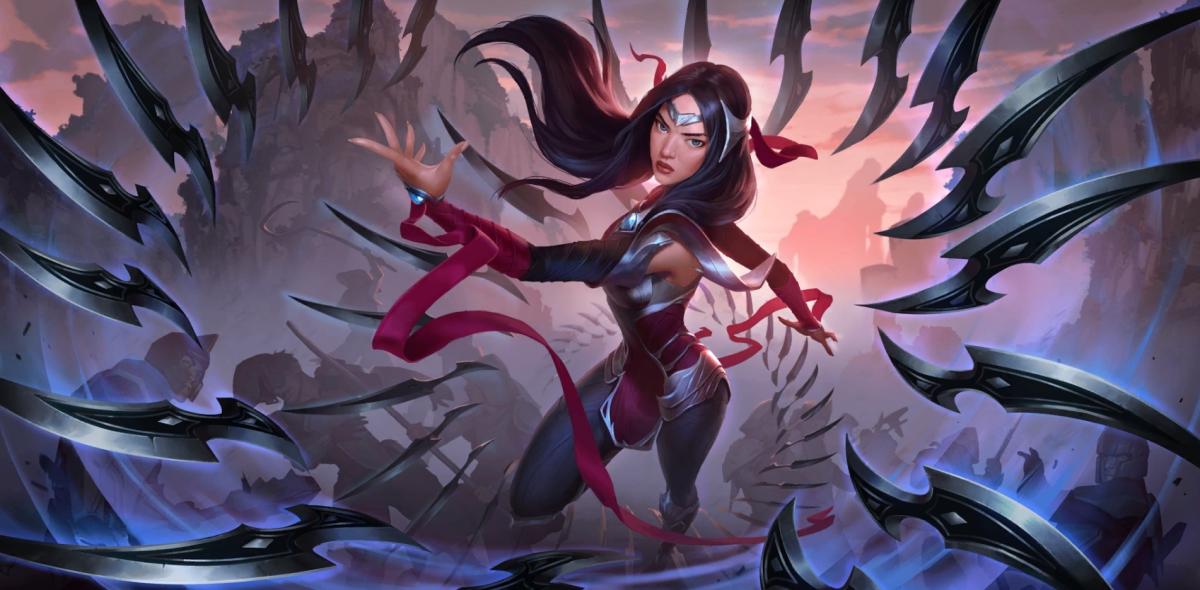
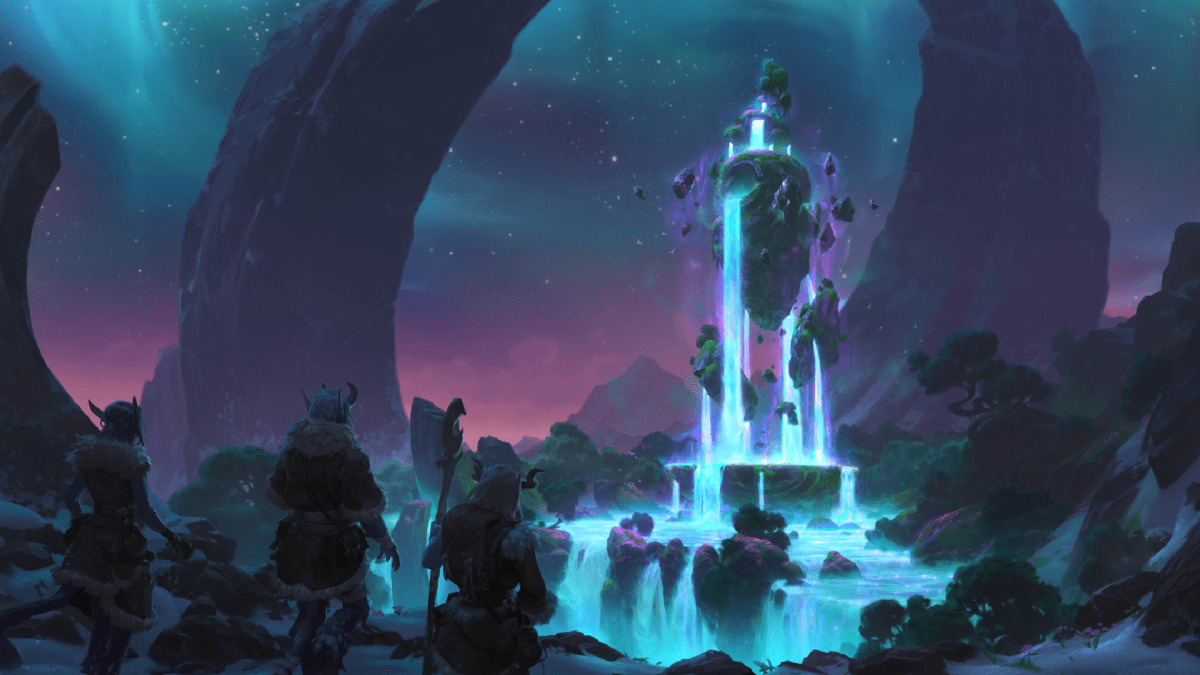
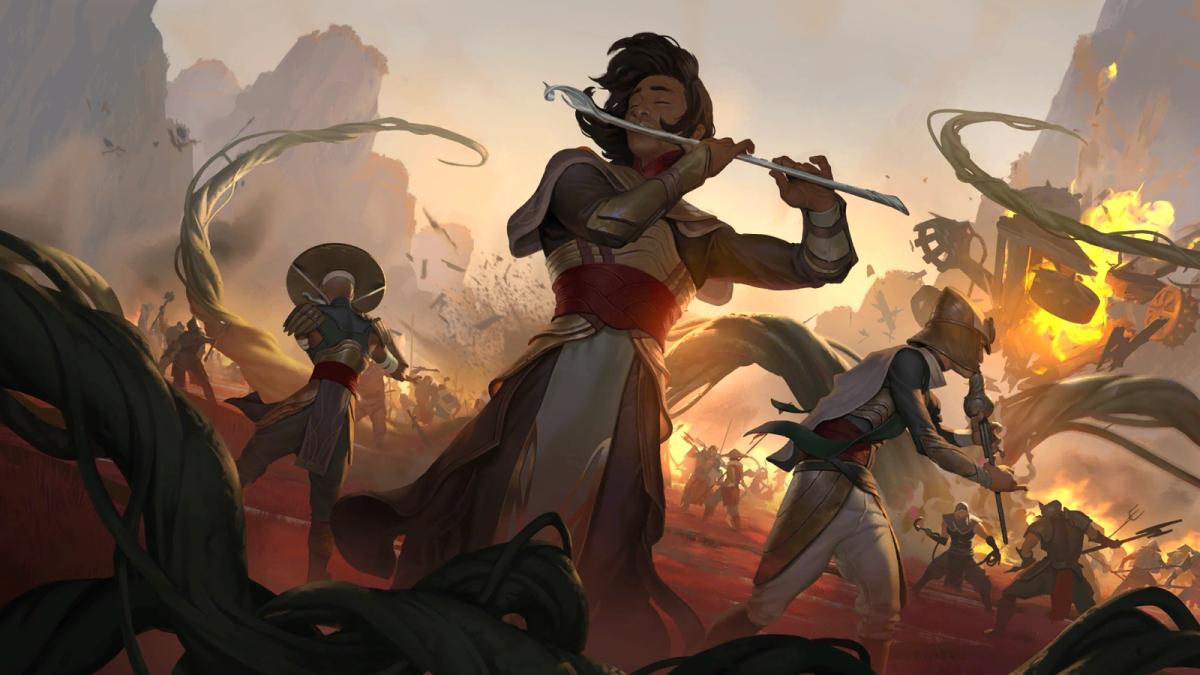
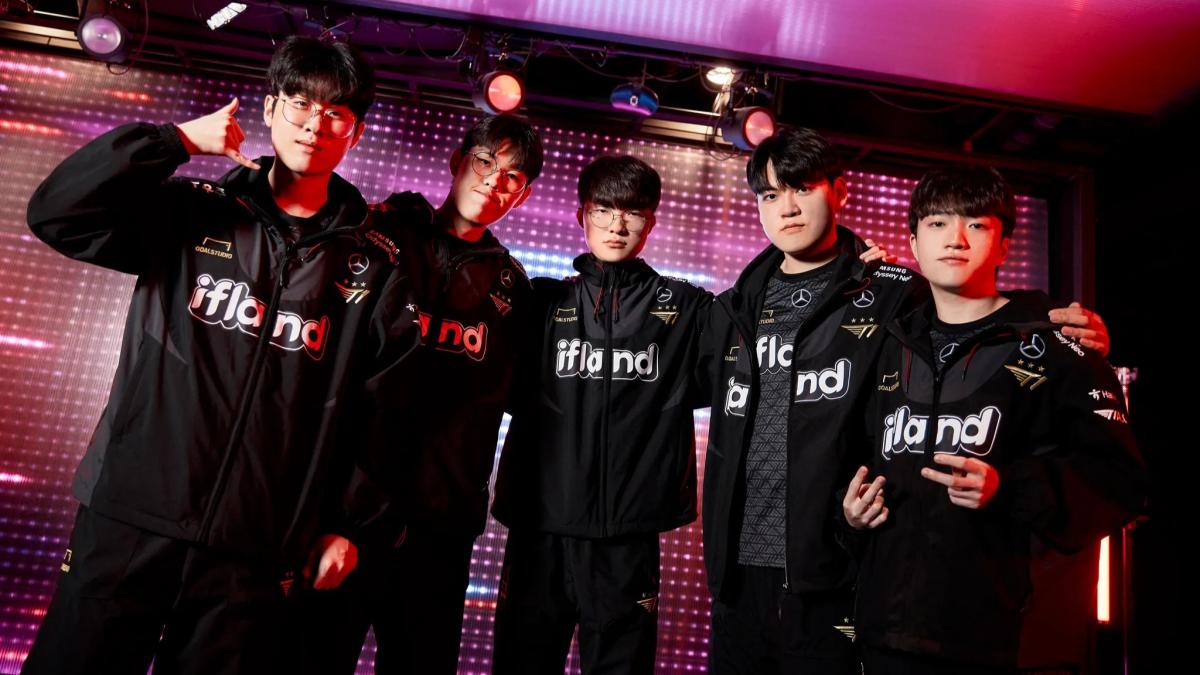

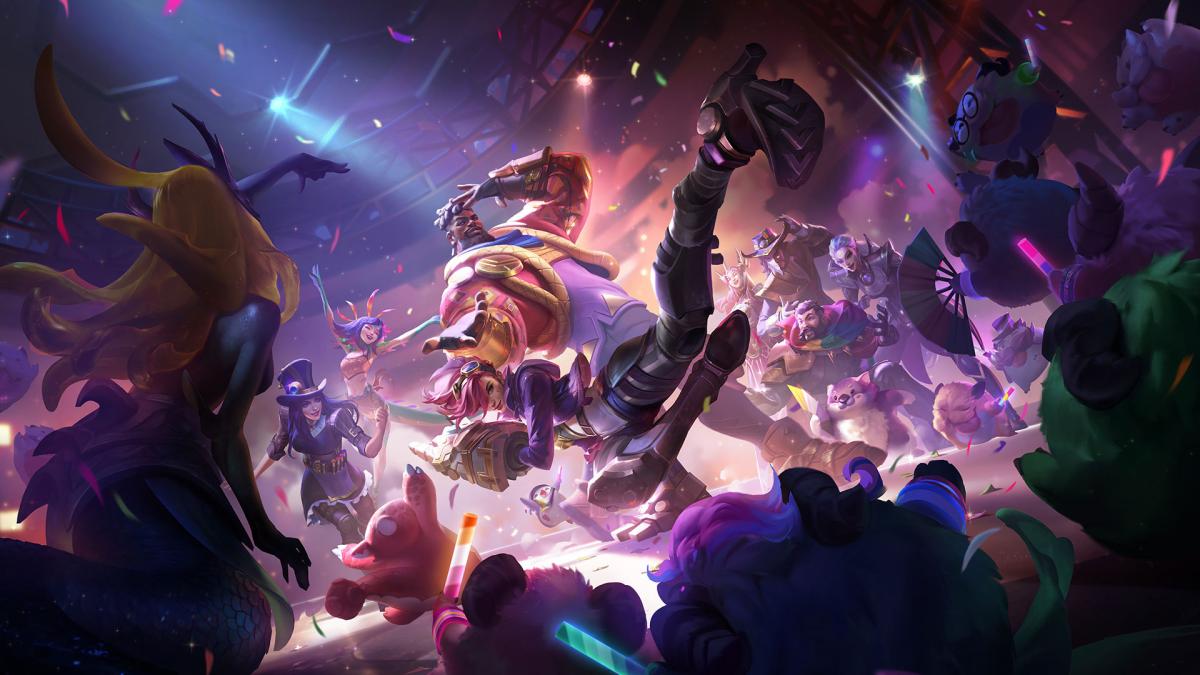
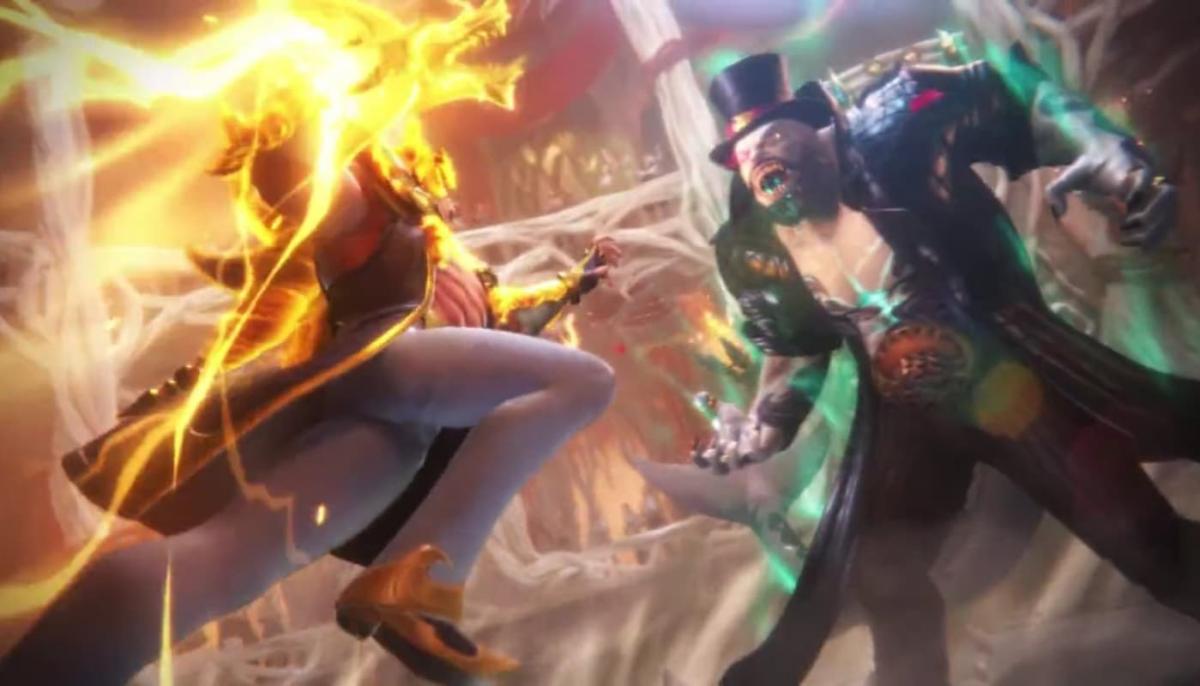
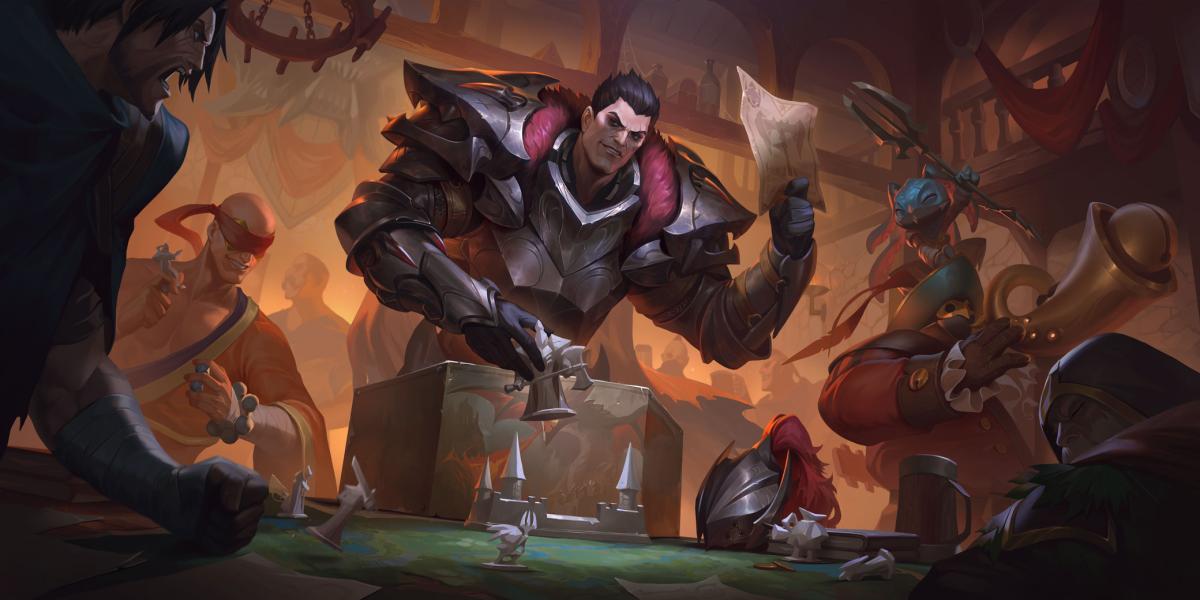


Published: Mar 4, 2021 07:23 pm